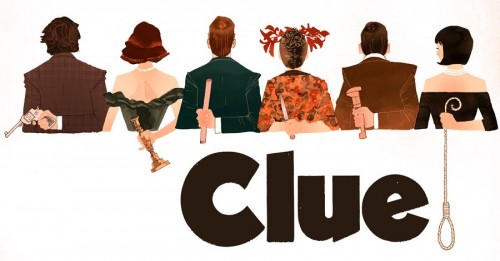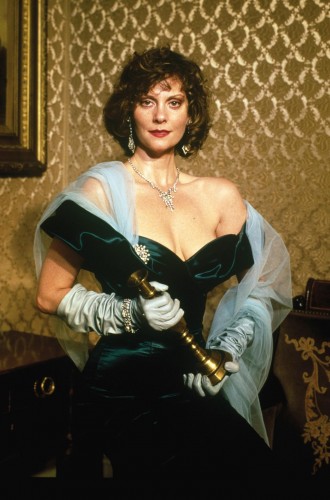Slumber Party Massacre came up while I was searching for female directors in the exploitation genre. Although it came off as yet another sensationalistic and gory 80s slasher, it stuck out, mainly due to its ridiculous title or the fact that most of the characters were female. Upon viewing it, what shocked me was not so much the gore and violence, but I was surprised by the clever humor, the funny characters, and most of all the incredibly veiled feminist satire.
Fairytale Prostitution in Angel by Elizabeth Kiy
Luc Besson: Hero of the Feminist Antihero? by Shay Revolver
Perhaps for the movie’s purposes, that doesn’t matter: the story seems to be far more driven by the desire to create an artistic film, rather than an intellectually/ethically/scientifically engaging narrative. The scientific aspect for example—the part of the film I found personally most engaging, that it is possible to tamper with the natural life-cycle, halting the aging process in its tracks—is touched upon but it seems, at least to me, to be more of a plot device for bringing Sarah into Miriam’s life than an attempt to explore an ethically challenging issue. The biology behind Miriam’s present state and the fate of her lovers is similarly irrelevant.
Maude and The Dude: Feminism and Masculinity in The Big Lebowski by Rachael Johnson
Most feminist criticism of Stephen King’s Carrie has focused on the male fear of powerful women that the author said inspired the film, with the anti-Carrie camp finding her death at the end to signify the defeat of the “monstrous feminine” and therefore a triumph of sexism. But Stephen King’s honesty about what inspired his 1973 book notwithstanding, Carrie is as much an articulation of a feminist nightmare as it is of a patriarchal one, with neither party coming out on top.
Birth of the Living Dead: Women & Gender in Cult Films & B-Movies by Amanda Rodriguez and Max Thornton
The ethics of the film are one thing, but it says a lot about the world of the movie that it’s able to go nearly two hours without a single important female character showing up on screen. There are no women cops, there are no women in the mob, there are only a couple of wives or passers-by or maybe a drug-addled girlfriend or two. But no one who matters. The acting characters in the film are all overwhelmingly and vocally male.
Even the ethos of the characters, that they will destroy that which is evil, but leave alone the pure and blameless, is inherently sexist. Because when they say pure and blameless, what they mean is the women and children. In this universe, women are not even people enough to do things wrong. We do not have enough agency even to commit evil.
I was neither a discerning nor an educated viewer, but even so I quickly cottoned on to the fact that certain Italian directors had produced some above-average horror flicks in the 1970s, characterized by a cavalier attitude toward nudity, pervasive Catholic imagery, and lashings of gore. Ignorant of the term giallo, I proceeded to dub this subgenre “spag-horror,” which isn’t actually an awful name for it.
As my initiation into the worlds of sex and violence, many European horror films of the 1970s no doubt occupy a Freudian subspace of my psyche. Probably the Ur-example of this genre and its strange, ambivalent attitude toward women and sexuality is Dario Argento’s 1977 meisterwerk, Suspiria.
Before There Was Orange is the New Black, There Was Roger Corman’s Women in Cages by Leigh Kolb
I found myself wondering about the designation of sexploitation. Female nudity in itself isn’t exploitative. Women fighting and women being abused are things that happen in prison. Are representations of women in these situations inherently exploitative, or are we conditioned to see women’s bodies and women’s actions and think: object? Certainly frame after frame of powerful, complex, awful and good, sympathetic and loathsome women has some kind of effect on the viewer. Since we are conditioned to only really consider the straight white male gaze as the norm, we see these movies as highly sexualized and exploitative.
The Shock of Sleepaway Camp by Carrie Nelson
On the surface, Sleepaway Camp isn’t much different than your average 1980s slasher movie. The comparisons to Friday the 13th can’t be ignored – Sleepaway’s Camp Arawak, much like Friday’s Camp Crystal Lake, is populated by horny teens looking for some summer lovin’, and is the site of a series of gruesome and mysterious murders that threaten to shut down the camp for the whole summer. But unlike Friday the 13th and other slasher films, the twist in Sleepaway Camp isn’t the identity of the murderer, and the final girl isn’t exactly who you’d expect.
Veronica Decides Not To Die–Heathers: The Proto-Mean Girls by Artemis Linhart
Indeed, the social structure of Westerburg High School is unsettling to say the least. Teens there would rather commit actual suicide than “social suicide.” Their alienation from both reality and ethical values is mirrored not only in J.D., Veronica and the Heathers, but also in the rest of the students. Peer pressure and the dream of popularity result in the “Westerburg suicides,” causing a downright suicide craze. Their supposed actions gave the popular kids depth and humanity and made them more popular than ever. When an unpopular girl attempts to kill herself, the new Heather in charge asserts, “Just another case of a geek trying to imitate the popular people of the school and failing miserably.”




